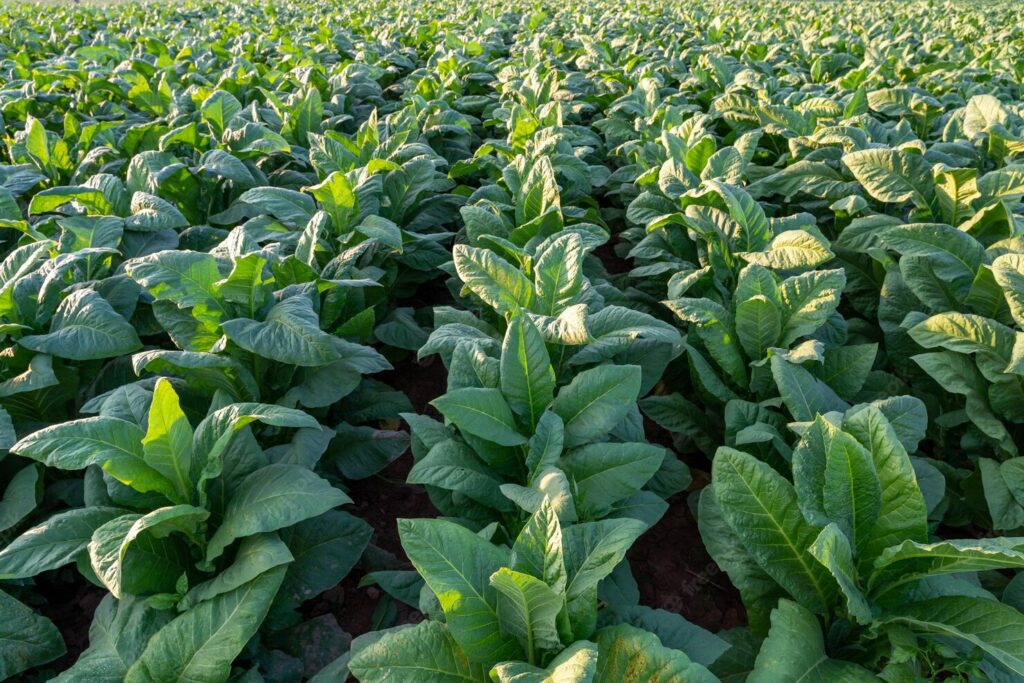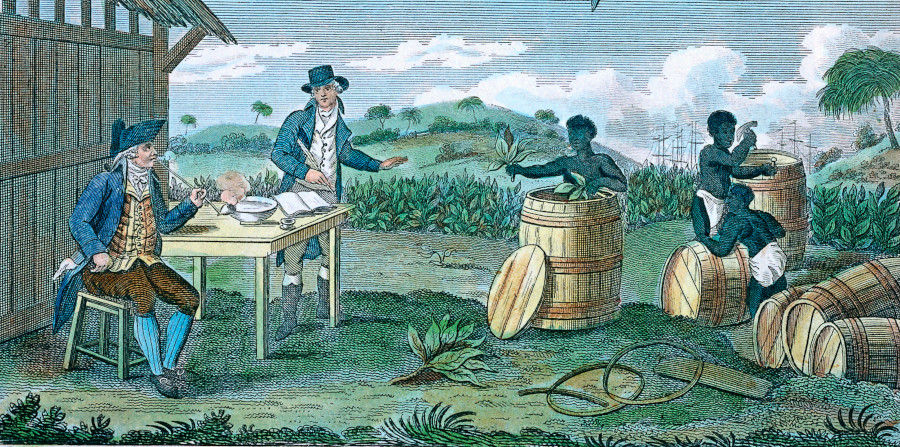1. Tobacco: A History of How It Spread From the Americas To Europe
Tobacco had already been used in the Americas for a long time by indigenous peoples of Mesoamerican and South America as medicine and used as a means of exchange for other goods at that time.
Tobacco has long been carried in pouches as a commonly recognized trade item by Eastern North American tribes, as well as smoked in pipe ceremonies, whether for religious ceremonies or to seal a treaty or agreement. Moreover, tobacco is utilized for the medical treatment of physical diseases in addition to spiritual and religious activities. It’s been used as a pain reliever for earaches and toothaches, as well as a poultice on occasion.
When European settlers arrived, they brought the practice to Europe, where it became popular. At first, Christopher Columbus brought a few tobacco leaves and seeds with him back to Europe, but most Europeans didn’t get their first taste of tobacco until the mid-16th century when adventurers and diplomats like France’s Jean Nicot — for whom nicotine is named — began to popularize its use. Tobacco was introduced to France in 1556, Portugal in 1558, Spain in 1559, and England in 1565.
Following the entrance of Europeans, tobacco became one of the principal goods fuelling colonialism, as well as a driving element in the importation of African slave labor. The plant was once regarded as the “holy herb” by the French, Spanish, and Portuguese due to its beneficial therapeutic qualities.
In 1559, samples were dispatched to Paris by the French ambassador to Lisbon, Jean Nicot. Francis II and Catherine of Medici, the King’s mother, received leaves and seeds from Nicot with orders to use the tobacco as snuff. Snuff was said to have “marvelously cured” the king’s persistent headaches, which may have been caused by sinus issues. (Francis II nevertheless passed away on December 5, 1560, at the age of seventeen, ending a reign of fewer than two years.)
Conrad Gesner, a Swiss physician, said in 1563 that smoking or chewing tobacco “had a marvelous capacity of causing a type of calm drunkenness.” A treatise describing the development of medicinal plants in the new world was written in 1571 by the Spanish physician Nicolas Monardes. He stated that the plant was first brought to Spain for its blossoms, but that “now we utilize it to a larger extent for the sake of its virtues than for its beauty.” He also claimed that tobacco could treat 36 health issues.
Tobacco seeds were first introduced to England by John Hawkins. Before Sir Walter Raleigh introduced the first “Virginia” tobacco to Europe from the Roanoke Colony, referring to it as “tobah” as early as 1578, William Harrison’s English Chronology records tobacco use in the nation as of 1573. Anthony Chute published Tabaco in 1595, reiterating earlier claims about the plant’s advantages and highlighting the beneficial effects of pipe smoking.
In other parts of continental Europe, tobacco was more easily assimilated. Iberia shipped “ropes” of dry leaves packaged in baskets to the Netherlands and southern Germany; during this time, tobacco was referred to in Spanish as canaster, which was motivated by the German Knaster. After viewing the plant while on diplomatic trips, Prospero Santacroce in 1561 and Nicolo Torbabuoni in 1570 introduced it to gardens in Italy.

2. The Impact of Tobacco on Early American History
The tobacco industry flourished steadily during the 1700s, peaking in 1880 when a machine for mass-producing paper cigarettes was patented. Cigarettes became much easier to create after that, and large tobacco businesses arose as a result.
Particularly, tobacco had a great impact on early American history. The cultivation of tobacco in America led to many changes. During the 1700s tobacco was a very lucrative crop due to its high demand in Europe. The climate of the Chesapeake area in America lent itself very nicely to the cultivation of tobacco. The high European demand for tobacco led to a rise in the value of tobacco. The rise of the value of tobacco accelerated the economic growth in America. The cultivation of tobacco as a cash crop in America marks the shift from a subsistence economy to an agrarian economy. Tobacco’s desirability and value led to it being used as a currency in colonies. Tobacco was also backed by the gold standard, with an established conversion rate from tobacco to gold.
The increasing role of tobacco as a cash crop led to a shift in the labor force that would shape American life and politics up through the Civil war. In order to keep up with the demand tobacco plantation owners had to abandon the traditional practice of indentured servitude in the Americas. In order to pursue maximum profits, the plantation owners turned to slavery to supply them with the cheap, fungible labor that they needed to keep up with increasing production.

Source: Slavery Images: A Visual Record of the African Slave Trade and Slave Life in the Early African Diaspora, Tobacco Production, Virginia, 1821
With a change in demand and a change in the labor force, James Bonsack, an avid craftsman, in 1881 created a machine that revolutionized cigarette production. The machine chopped the tobacco, then dropped a certain amount of the tobacco into a long tube of paper, which the machine would then roll and push out the end where it would be sliced by the machine into individual cigarettes. This machine operated at thirteen times the speed of a human cigarette roller.
Until 1883, tobacco excise tax accounted for one-third of internal revenue collected by the United States government. Internal Revenue Service data for 1879-80 show total tobacco tax receipts of $38.9 million, out of total receipts of $116.8 million. Following the American Civil War, the tobacco industry struggled as it attempted to adapt. Not only did the labor force change from slavery to sharecropping, but a change in demand also occurred. As in Europe, there was a desire for not only snuff, pipes, and cigars, but cigarettes as well.
This caused an enormous growth in the tobacco industry that lasted well into the 20th century until the scientific revelations discovering the health consequences of smoking and tobacco companies’ usage of chemical additives were revealed.
Today, tobacco is used in various forms in different parts of the world. Tobacco in many countries is sometimes adopted as a cash crop by the farmers and government treasuries (excise, taxes, etc.), and is also grown for local consumption.
The tobacco industry provides thousands of jobs and is also a major source of income for the advertising industries, printed and electronic media, and government (for review and as a source of foreign currency).



